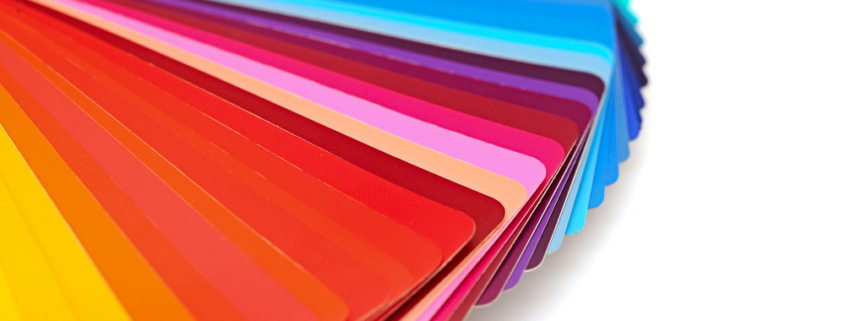Color Meanings and the Art of Using Color Symbolism
Throughout the day, you see colors all around you. Those colors have an impact on the way you feel by tapping into your emotions. Every color has a meaning, and there is a science to adding colors to your branding. Here are a few things you will need to know about those color meanings and the art of their symbolism.
Colors Are Powerful
Colors are a powerful tool, especially when you know how to use them for your brand. Those color choices can be used in your marketing materials or online communications. Emails, presentations, websites, and social media platforms can all benefit from the use of color.
What Are the Meanings of Color?
Over millions of years, humans have developed a biological connection between colors and emotions. When you understand these connections, you can provoke a specific behavior or emotion. Using those feelings is more powerful than a drawing or symbol. Colors can be a great way to make your brand more relevant to consumers.
The meaning of color stems from biological conditioning, cultural development, and psychological effects. Humans are wired to pay attention to bright colors, like red stop signs. In other cases, some colors have cultural meanings, such as pink for girls and blue for boys. However, those color connections are changing over the past few years. In some parts of the world, colors can have different meanings. If you are struggling to find the right color for your company, make sure to reach out to a Philadelphia branding and design agency.
Now let’s look at some specific color meanings.
Red
Red is often associated with danger, passion, and energy. Humans can see “red” when they are angry or use it as a symbol of love. Red is a powerful color for branding. This color is also known to stimulate an appetite. For that reason, it is used in many fast-food chains. Red also can attract users to your business as it is a call-to-action color.
If you want to stand out, then red could be an excellent color for your brand. It is a perfect choice to draw attention to your product and get those visitors to make a purchase on your website.
Orange
If your brand centers around enthusiasm, creativity, and youth, then take a look at orange. Many people use orange as a secondary color since it combines red’s warmth and yellow’s playfulness. This color attracts attention without the daring emotion of red. Along with that, orange is a youthful color that has an element of fun and energy. You might see orange used as the primary color for tropical or sports drinks. Businesses geared towards children often have some orange in the branding.
Many people use orange as an accent. It is helpful for those brands that want to invoke a feeling of youth and creativity. If you’re going to catch the eye of your consumers, make sure to use orange as an accent piece.
Yellow
Yellow is known for its feeling of hope and happiness. Like sunflowers and smiley faces, yellow is a color that has many happy emotions. Similar to orange and red, it is another color that can grab your attention.
Yellow is an excellent choice for those businesses based on fun and speed. Be careful with the shade of yellow. While a bright yellow can grab attention, a pale yellow can fade into the background and not make an impact.
Green
For those brands focused on stability or wealth, use green in your color scheme. Green is also the color of harmony, growth, and nature. While it has a connection to the outdoors, green is another color that calls for action.
You might want to use green for an organic, sustainable, or eco-friendly business. However, make sure that you use the right shade of green. A muted or light shade is great, but a neon color can bring a less harmonious feel to your brand’s colors.
Blue
Blue is a popular color, and it is associated with intelligence, trust, and calm. This color is relaxing and cool. Blue is one of the top to-go colors for corporate businesses and social media networks.
If you want your business to be associated with trust and professionalism, use blue for your brand. It is a great choice that can appeal to men and women. For those businesses that rely on meditation or relaxation, blue is the ultimate color that can bring some tranquility.
Purple
Purple is a fascinating color that is often associated with mystery, luxury, and spirituality. This color is both cool and warm, with the passion of red and the serenity of blue. Since purple was the favorite color of royalty, it can add some prestige to a brand. Purple is also a color that has deep meaning for religious organizations.
If you want to have a luxurious connection to your business, you might want to use purple. With that, add some extra wow to your brand with this color, especially when paired with golden tones.
Now that you know the basics behind color meanings and how to use them in your brand, you can see what works best for you. There are no set rules for colors. However, you always want to keep your audience in mind. Just make sure you create color combinations that can connect with your business and clients. If you choose the wrong color combination, you can repel potential customers.
Choose the Right Color for Your Business Branding
Do you need help choosing the perfect colors for your business? Let the experienced team at Hyland Graphic Design & Advertising give you a helping hand. We are one of the best creative companies in Philadelphia. We understand colors, and our team will find the right ones that can wow your audience. There is no more guesswork about what will work for your business. If you would like to schedule a consultation about colors or discuss any other parts of your branding, please give us a call at (484) 879-6145.






Leave a Reply
Want to join the discussion?Feel free to contribute!